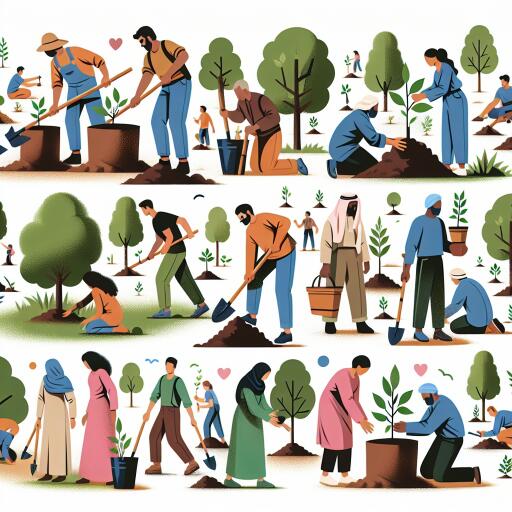
Push to Plant More Trees: Combating Heatwaves with Green Initiatives
In the bustling streets of Dhaka, Bangladesh, the recent surge in temperatures has led to a critical call for action: the need for more trees. The city, already grappling with the relentless heat, finds its roads melting and its citizens seeking solace under the sparse shade of the few remaining trees. The situation has sparked a nationwide movement, powered by social media, aiming to combat the heat with increased urban forestry.
The urgency of this movement is underscored by the record-breaking heatwaves hitting Bangladesh, making it evident that the climate crisis is intensifying. Dhaka, a city that once boasted lush greenery, bodies of water, and a cooler microclimate, has seen its natural defenses whittled away by rapid urbanization and infrastructural development. In response, individuals and groups across the digital sphere have taken it upon themselves to inspire a greening campaign like never before.
Highlighting the initiative, prominent figures across various platforms have called upon their followers to engage in tree planting activities. From celebrities to political youth wings, the campaign to plant thousands of trees has taken off with remarkable enthusiasm. The aim is clear: to replenish the city’s green cover and create a buffer against the scorching heat. One innovative organization, Green Savers, has capitalized on this newfound public interest by facilitating a tree sponsorship program, enabling individuals to contribute to afforestation efforts while keeping track of their impact.
In a heartening display of community spirit, residents of Dhaka have also taken to transforming neglected spaces into green havens. This initiative, led by volunteers and enthusiastic citizens, demonstrates the potential of collective action in urban greening projects. It’s not just about beautifying spaces but creating vital pockets of cool in the concrete jungle.
However, the effects of the heatwave extend beyond discomfort, with serious implications for health and safety across the region. The recent climate anomalies underline the urgent need for action against the backdrop of Asia’s rapid warming trends. Urban centers like Dhaka are particularly vulnerable, with their dense populations and built environments contributing to the heat island effect. In these critical times, the role of trees becomes paramount, offering not just shade but a vital ecological service by cooling urban areas.
Despite the enthusiasm for tree planting, experts caution that the approach needs to be strategic. Planting trees during the peak heat of summer presents challenges, and the selection of species is critical to ensuring biodiversity and long-term sustainability. The emphasis is on choosing native species that support local ecosystems rather than introducing potentially invasive plants.
To forge a path forward, urban planners and environmental experts recommend a coordinated approach that encompasses not just tree planting but broader urban greening strategies. This includes the creation of parks and eco-parks, as well as innovative solutions like rooftop gardens and vertical greening. Such measures can significantly enhance the city’s resilience to heatwaves and improve the overall quality of life for its residents.
The drive to plant more trees in Dhaka and beyond is more than a response to a climate emergency; it’s a testament to the power of community action and the critical role of green spaces in our urban environments. As this movement gains momentum, it serves as a reminder that every tree planted is a step towards a cooler, more sustainable future.
By embracing green initiatives and supporting afforestation efforts, individuals and communities can play a crucial role in mitigating the impacts of climate change. The call to plant more trees is not just about combating heatwaves; it’s about creating a liveable, breathable world for generations to come.





Leave a Reply